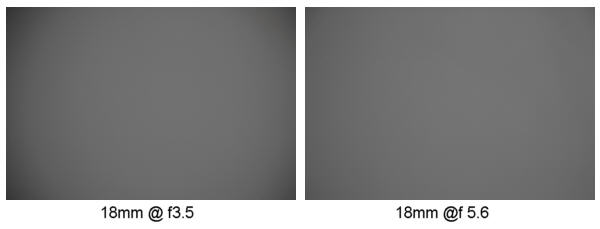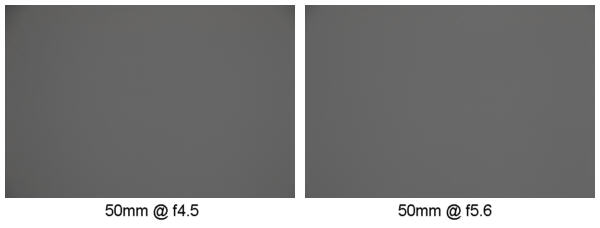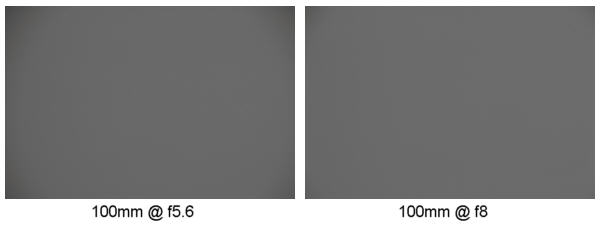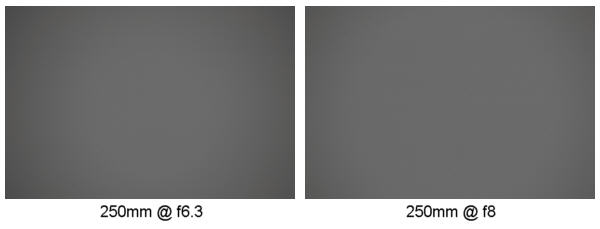

Tamron 18-250mm F/3.5-6.3 AF Di-II LD Aspherical (IF) Macro Review
Vignetting
The following images show the amount of vignetting observed with the Tamron 18-250mm F/3.5-6.3 AF Di-II LD Aspherical (IF) Macro mounted on a Canon EOS 20D

Wide open at f3.5 there's significant vignetting visible, but stopping down to f5.6 results in much more uniform illumination, though some slight vignetting can still be seen.

At 50mm wide open, vignetting is significantly less noticable than at 18mm. Stopping down to f5.6 produces pretty uniform frame illumination.

Vignetting wide open at 100mm is similar to that seen at 50mm and again stopping down one stop (this time to f8) results in a pretty uniform frame.

Wide open at 250mm (f6.3), vignetting increases a little. Stopping down to f8 improves the situation quite a bit, though some slight darkening can still be seen at the corners.
Of course vignetting can be fairly easily be corrected in many image editors, so I don't consider it as serious a defect as it would be if the lens was intended for use with film camera, where what you see is what you get!
Distortion
Like most wide zooms, there's significant distortion at the short end of the focal length range which pretty much vanishes by about 28mm. From 28mm to 250mm there is a slight amount of pincushion distortion, but not enough to be a problem unless you're shooting graph paper or brick walls.

Again, geometric distortion is fairly easy to digitally correct, so it's not a huge deal, though less is always better!
- I - Specifications and Design
- II - Zoom Range and Macro
- III - Vignetting and Distortion
- NEXT: IV - Performance at 18mm and 50mm
- V - Performance at 135mm and 250mm
- VI - Conclusions
